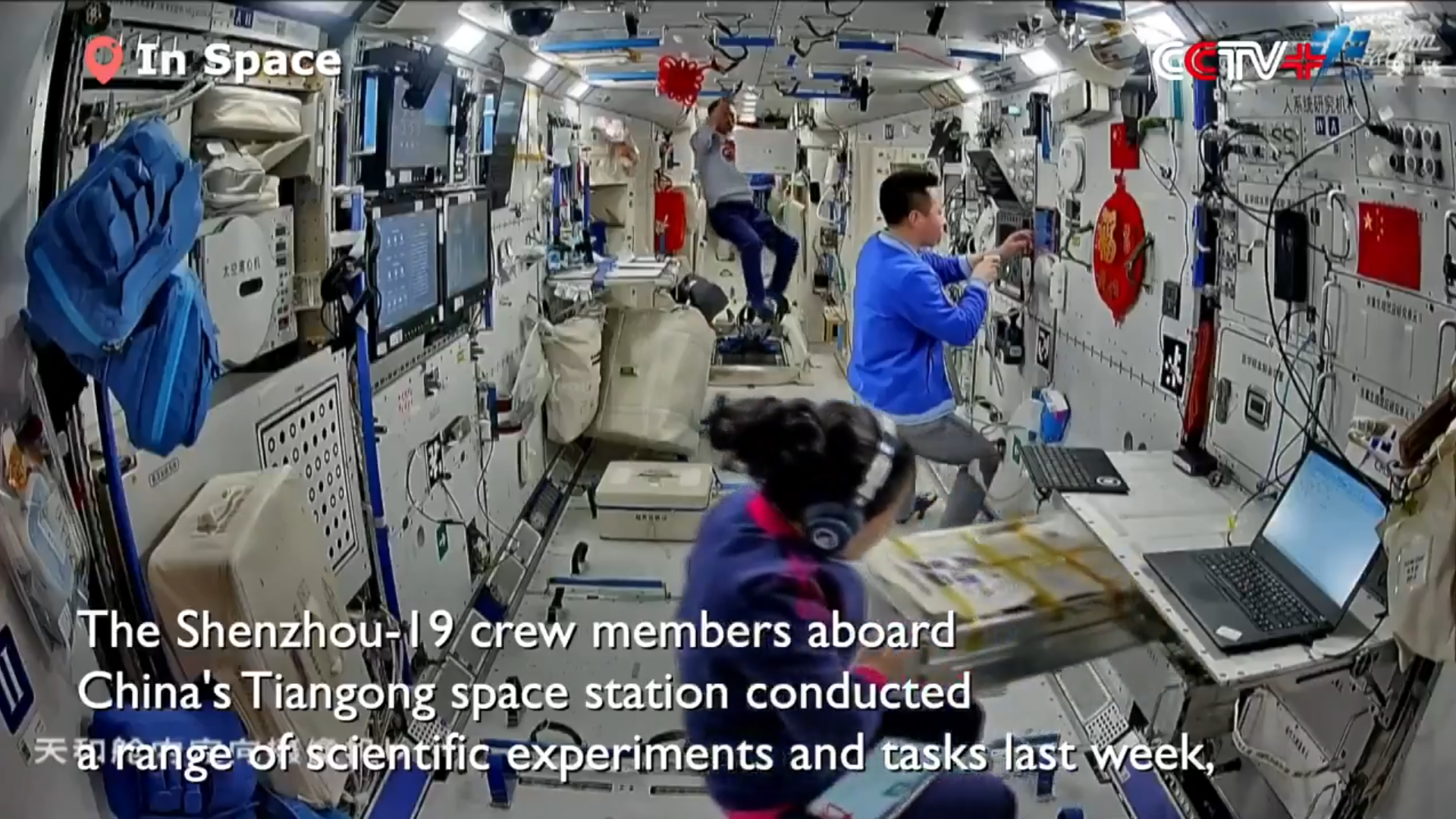
The Shenzhou XIX astronauts aboard China's Tiangong space station conducted a range of scientific experiments and tasks last week, according to the China Manned Space Agency.
In a video released by the CMSA on Sunday, astronauts Cai Xuzhe, Song Lingdong and Wang Haoze were seen busy working in the space station's core module Tianhe where they have stayed for nearly four months.
ALSO READ: Crew list finalized for Shenzhou XX, Shenzhou XXI manned missions
The crew conducted research into how exercise impacts muscles and bones in space. They collected data on plantar pressure, joint kinematics and muscle parameters during running and resistance exercises under different load conditions, which will help elucidate the changes in muscle-tendon interaction during spaceflight.
The crew also completed vascular ultrasound examinations to explore the pan-vascular network blood flow patterns in the weightless environment by collecting morphological characteristics, hemodynamic parameters, and functional data of multiple organs in the human body under different orbital durations.
READ MORE: Shenzhou XIX crew completes second series of extravehicular activities
To understand how being in space affects eyesight, the astronauts took a series of eye tests with high-tech equipment. Researchers will use their data to study the changes in astronauts' visual function during long-duration spaceflight and develop strategies for maintaining eye health.
In addition to human health, the crew worked on several physics experiments. They completed tasks including re-configuring equipment in the fluid physics rack and changing the burner in the combustion science rack.
READ MORE: Shenzhou XIX astronauts on space station conduct new experiments
The crew also spent time training for rendezvous and docking mission, and performing other tasks such as maintenance on key experiment equipment and life support systems.
The Shenzhou XIX astronauts entered the orbiting space station for a six-month spaceflight on Oct 30 last year. Their mission includes 86 space science research and technology experiments, as announced by CMSA prior to launch.


